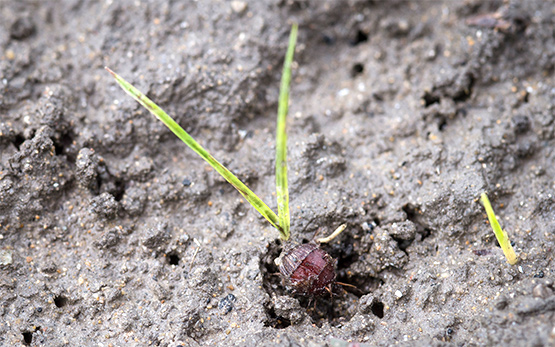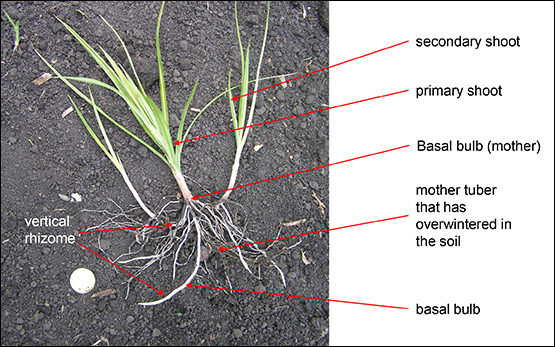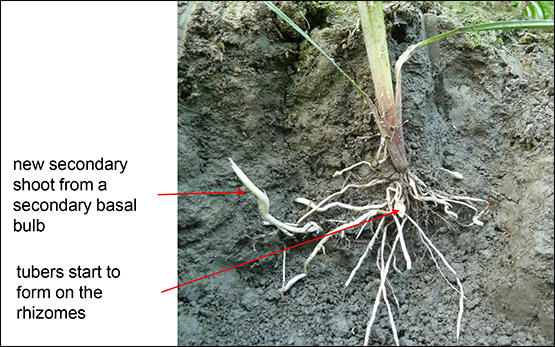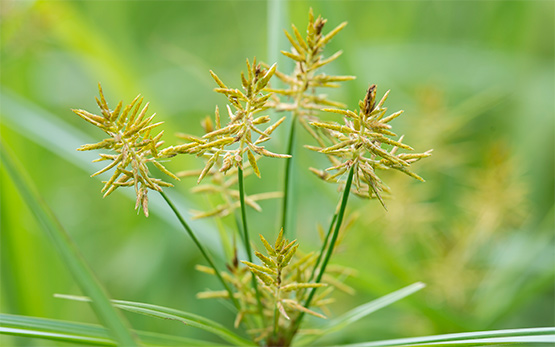Germination occurs from April until autumn, as the soil must have warmed sufficiently for the dormant tubers to germinate. During germination of the mother tubers, one or more vertical rhizomes develop. Basal bulbs form on these rhizomes near the soil surface. These basal bulbs then form shoots as well as secondary rhizomes and basal bulbs. A tuber formed the previous year can thus give rise to numerous individual new plants.

Vegetative Phase

Regenerative Phase
During the regenerative phase, the rhizomes differentiate into tubers. Tuber formation begins at the end of May, or earlier for crops under netting/plastic, and carries on all summer, until the first frosts. The plant overwinters in the form of tubers. We have observed that tubers survive at temperatures as low as -10° C at the soil surface. Although most tubers are found in the surface layer of the soil (down to 15cm), some can form at a depth as low as 50cm from the surface, depending on soil type.

The vegetative and regenerative phases occur at the same time.
Flowering
Although tubers constitute the main means of propagation, it has been demonstrated that germination from seed is possible. Flowering takes place during the summer months, from June to September. The seeds can germinate in the field if there is sufficient water available and competition from other weeds is low. Trials have shown that the young seedlings from seed are as difficult to control with herbicides as those from tubers. Moreover, the risk of wind dispersal of the seed is high. Each seed consists of a new genetic combination with potentially new traits, such as e.g. an adaptation to local climatic conditions, better herbicide tolerance or improved competitive strength vis-à-vis native plants. For these reasons it is crucial that yellow nutsedge plants be prevented from flowering, even at the edge of the field.

Bibliography
Stoller E. W., Sweet R. D. (1987): Biology and life cycle of purple and yellow nutsedges (Cyperus rotundus and C. esculentus).
Weed Technology 1: 66-73.
Weed Science in Arable Crops - Changins





